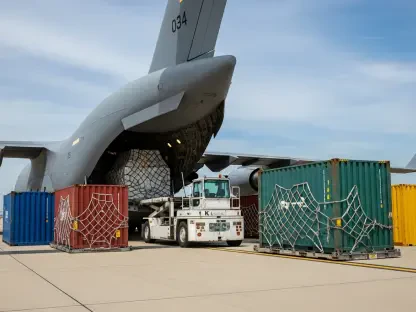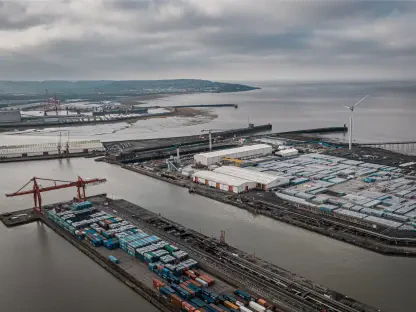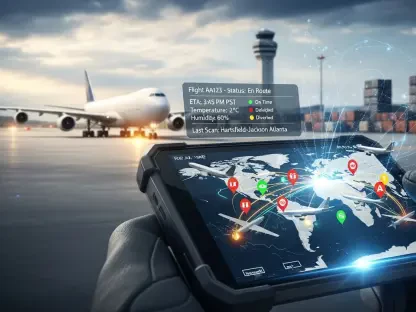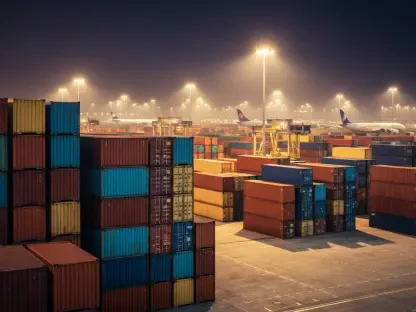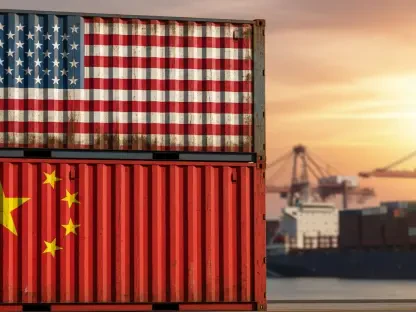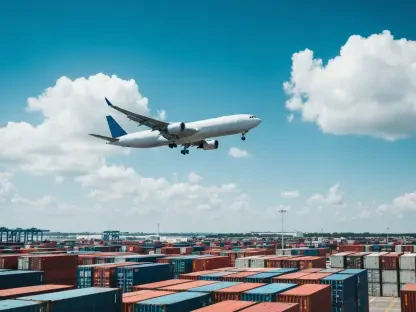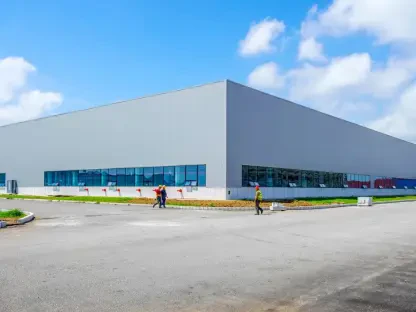In recent years, the explosive growth of e-commerce has profoundly impacted the logistics and delivery industries. One area, in particular, that has seen remarkable transformation is last-mile delivery – the final step in getting a product from a warehouse to the consumer’s doorstep. In Parsippany, New Jersey, this demand is reshaping infrastructure, employment, and local economies.
The E-commerce Explosion
Changing Consumer Expectations
As e-commerce continues to flourish, consumers’ expectations around delivery have changed dramatically. Traditional delivery timelines once spanned several days, but now, next-day and even same-day deliveries are the norm. According to data from the US Bureau of Labor Statistics, a staggering 83% of consumers require guaranteed delivery dates, and 80% expect specific delivery time slots. These heightened expectations are driving continuous improvements in last-mile delivery services. This shift in consumer behavior is forcing retailers to adopt more sophisticated logistics solutions to stay competitive in an increasingly crowded marketplace.
In response to these elevated expectations, companies are investing heavily in technology and infrastructure to ensure timely deliveries. Real-time tracking systems, predictive analytics, and advanced route planning algorithms are just a few of the tools being employed to enhance efficiency. Retailers understand that meeting delivery expectations is not just a matter of convenience but a crucial factor in customer satisfaction and loyalty. As consumers become accustomed to rapid delivery options, the pressure on logistics providers to innovate and optimize their operations will only intensify.
Rise of Diverse Delivery Companies
Where residents once saw deliveries primarily from companies like UPS, today a multitude of companies including Amazon, Walmart, and Lowe’s regularly navigate residential streets. This diversification underscores the rapid expansion and competitive nature of the sector. The demand for quick, reliable, and varied delivery options has pushed a broad array of retailers to enhance their last-mile capabilities. This trend also reflects a broader shift toward a gig economy, with many smaller, specialized delivery firms stepping in to fill niches and meet specific customer needs.
The proliferation of delivery companies has also introduced new complexities into the logistics landscape. Coordinating deliveries from multiple vendors can create traffic bottlenecks and inefficiencies, particularly in densely populated areas. However, it also presents opportunities for collaboration and innovation. Some companies are exploring partnerships to share delivery networks or leverage crowd-sourced delivery models, further transforming the traditional logistics paradigm. As the sector continues to evolve, the ability to adapt and integrate various delivery solutions will be key to sustaining growth and service quality.
Workforce Expansion
Increased Demand for Delivery Drivers
The burgeoning demand for last-mile delivery services has necessitated a corresponding increase in the workforce. Last year, about 1.7 million individuals were employed as delivery drivers in the US, and this figure is expected to swell to 1.9 million by 2031. The boom in e-commerce requires a substantial workforce to meet delivery deadlines and handle growing volumes of packages. This surge in employment opportunities is a double-edged sword, presenting both economic benefits and logistical challenges for companies striving to maintain a skilled and reliable workforce.
To address these challenges, delivery companies are focusing on creating attractive employment packages that include competitive salaries, benefits, and opportunities for career advancement. The demand for skilled drivers is driving wage growth and spurring investments in training programs to ensure drivers are well-equipped to handle the complexities of last-mile logistics. Additionally, companies are exploring advanced recruitment strategies and retention initiatives to mitigate high turnover rates and foster long-term employee engagement. These efforts are crucial in sustaining the rapid delivery speeds that consumers now expect.
Market Growth and Employment Trends
The last-mile delivery market is anticipated to grow at a compound annual growth rate (CAGR) of 15.62% from 2022 to 2027. This surge is resulting in both employment opportunities and challenges for retaining a stable workforce. Delivery companies are increasingly focusing on their employees’ work conditions, creating competitive compensation packages, and offering attractive benefits to retain talent. As labor markets tighten, the ability to attract and retain qualified delivery drivers will become a critical factor in maintaining service levels and competitive advantage.
In addition to financial incentives, companies are investing in technologies that streamline the delivery process and reduce the physical strain on drivers. Automated sorting centers, route optimization software, and electric delivery vehicles are just a few examples of innovations aimed at improving operational efficiency and employee satisfaction. By enhancing the working environment and offering robust support systems, companies can better navigate the labor challenges associated with rapid market growth. As the industry continues to expand, these strategies will be key in sustaining both workforce stability and high-quality delivery services.
Tackling the Last-Mile Challenge
The Complexity of Last-Mile Delivery
Last-mile delivery, while critical, is inherently complex and costly. This final leg often encounters hurdles such as traffic congestion, intricate route planning, and ensuring customer availability. The failure rate for first-attempt deliveries hovers between 5% to 10%, contributing to higher costs and inefficiencies. It is also reported that around 5% of online orders never reach the consumer, underlining the pressing need for innovative solutions. Addressing these challenges requires a multi-faceted approach that combines technological advancements with logistical ingenuity.
One significant issue is traffic congestion, which can delay deliveries and disrupt schedules. To mitigate this, companies are increasingly investing in advanced routing algorithms and real-time traffic monitoring systems. These technologies enable drivers to navigate around congestion and optimize their delivery routes. Additionally, improving customer communication through real-time tracking updates and flexible delivery windows can reduce failed delivery attempts. Efforts to streamline the last mile must also consider environmental impacts, prompting many companies to explore eco-friendly options like electric delivery vehicles and bike couriers.
Innovative Solutions and Efficient Planning
To mitigate these challenges, companies are leveraging advanced technologies, including AI and machine learning, to optimize routes and predict traffic patterns. Investments in real-time tracking systems and improved customer communication are pivotal in enhancing delivery success rates and reducing costs. The focus is also on deploying eco-friendly delivery options to address environmental concerns, thereby improving sustainability in last-mile logistics. These innovations are transforming how logistics companies operate, paving the way for more efficient and effective delivery solutions.
In addition to technological innovations, companies are exploring new delivery models, such as crowd-sourced delivery networks and autonomous vehicles. These models offer the potential to reduce costs and improve delivery times by leveraging a more flexible and dynamic workforce. Another emerging trend is the use of micro-fulfillment centers, strategically located within urban areas to shorten delivery distances and speed up order processing. By integrating these diverse strategies and technologies, logistics providers can better navigate the complexities of the last mile while meeting the evolving demands of e-commerce consumers.
Infrastructure and Facilities
Demand for Light Industrial Warehouses
The surge in e-commerce has led to a significant increase in the demand for light industrial warehouses ranging from 70,000 to 120,000 square feet. These warehouses are crucial for facilitating efficient last-mile delivery. Unfortunately, such facilities are in short supply, leading to soaring rent growth. As observed by Chris Zubel from CBRE, this trend is expected to continue, as the rise of e-commerce maintains pressure on real estate markets. The scarcity of suitable warehouse space underscores the urgent need to develop more facilities tailored to the needs of e-commerce logistics.
To meet this demand, real estate developers are increasingly focusing on converting or repurposing existing structures into light industrial warehouses. Urban areas, where space is at a premium, are seeing a rise in vertical warehousing solutions and multi-level distribution centers. These innovations maximize space efficiency while accommodating the high throughput required by last-mile operations. Furthermore, the strategic placement of these facilities near major transportation hubs ensures that goods can be quickly and efficiently routed to their final destinations. As the market for e-commerce continues to grow, the development of specialized warehousing infrastructure will be crucial in supporting the logistics chain.
Local Developments in Parsippany
Parsippany has approved several warehouse properties, including 20 Lanidex Plaza, 3 Century Drive, 249 Pomeroy Road, 299 Jefferson Road, and 7 Campus Drive. These developments are strategically positioned to support efficient last-mile operations. The scarcity of suitable warehouse space underscores the urgent need to develop more facilities tailored to the needs of e-commerce logistics. These new properties not only address current demands but also set the stage for future expansion, ensuring that Parsippany remains a vital hub in the logistics network.
The strategic approval of these properties reflects the town’s proactive approach to accommodating the needs of modern e-commerce. By facilitating the development of such infrastructure, Parsippany is positioning itself as a logistical focal point that can attract further investment and business opportunities. This forward-thinking strategy enhances the town’s appeal to companies looking for efficient and accessible warehousing solutions. The ongoing growth and investment in logistics infrastructure in Parsippany highlight the town’s key role in the ever-evolving landscape of last-mile delivery.
Strategic Location of Parsippany
Geographic Advantages
Parsippany’s strategic location, intersected by major highways such as Routes 287, 10, 46, 53, and 202, makes it an optimal hub for last-mile delivery services. This proximity to densely populated areas enhances its attractiveness, positioning it as a critical node in the logistics chain. Its geographic advantages make it an ideal area for further investment in logistics and infrastructure. By leveraging its central position, Parsippany can efficiently serve a large market, facilitating faster deliveries and optimized route planning for logistics providers.
The town’s connectivity to major transportation networks reduces the time and cost associated with moving goods from warehouses to consumers. This efficiency is particularly valuable in an industry where speed and reliability are paramount. Moreover, Parsippany’s location provides a logistical advantage that can be leveraged by companies to improve their service offerings and broaden their market reach. The combination of infrastructure, strategic location, and local investment makes Parsippany a compelling choice for businesses looking to enhance their last-mile delivery capabilities.
Future Prospects for Growth
The ongoing infrastructural developments and newly approved warehouse projects are setting the stage for Parsippany to become a leading center for last-mile delivery services. These advancements not only benefit the local economy through job creation and increased commercial activities but also position the town as a pivotal player in the evolving logistics landscape. As consumer demand for rapid delivery continues to grow, Parsippany’s strategic investments in infrastructure ensure it remains at the forefront of the industry, poised to capture new business opportunities.
Parsippany’s forward-looking approach signals its readiness to accommodate future growth and technological advancements in the logistics sector. By fostering a supportive environment for business development and innovation, the town is well-positioned to attract new investments and partnerships. As last-mile delivery continues to evolve, Parsippany’s strategic initiatives and geographic advantages will play a vital role in shaping the future of logistics, making it a linchpin in the broader e-commerce ecosystem. The town’s proactive stance ensures it remains a competitive and attractive location for logistics operations in the years to come.
Enhancing Consumer Experience
Meeting Consumer Demands Efficiently
With the rapid growth of e-commerce, meeting consumer demands efficiently remains paramount. Retailers and logistics companies are continuously seeking ways to streamline operations and reduce delivery times. Innovations in delivery methods, such as drone deliveries and autonomous vehicles, are being explored to further enhance the consumer experience. These advanced technologies promise to revolutionize the last-mile delivery process, offering faster, more reliable, and more sustainable options for getting products to consumers.
The implementation of these innovative solutions requires significant investment in research and development, as well as new regulatory frameworks to ensure safety and reliability. Despite the challenges, the potential benefits are substantial, including reduced traffic congestion, lower delivery costs, and improved service levels. By embracing emerging technologies and integrating them into their delivery networks, companies can better meet the high expectations of modern consumers. The focus on efficiency and innovation in last-mile delivery is crucial in maintaining customer satisfaction and fostering long-term loyalty in the digital age.
Sustainable Delivery Practices
In recent years, the surge in e-commerce has drastically altered the logistics and delivery sectors, with last-mile delivery experiencing significant transformation. This crucial final step in the delivery process involves transporting a product from a warehouse directly to the consumer’s home. In Parsippany, New Jersey, this evolving demand is notably reshaping the local infrastructure, job market, and economy. As more consumers opt for online shopping, the volume of packages requiring efficient last-mile delivery has surged, necessitating enhancements in road networks and delivery systems. Companies are investing in advanced technologies like drones and autonomous vehicles to cope with the demand while reducing delivery times. This shift is also creating a plethora of new jobs, from delivery drivers to logistics coordinators. Local businesses and economies are feeling the impact, as the increased demand for e-commerce and swift delivery services leads to greater investments and economic activity. In essence, Parsippany exemplifies how the last-mile delivery boom is revolutionizing local communities in the digital age.



